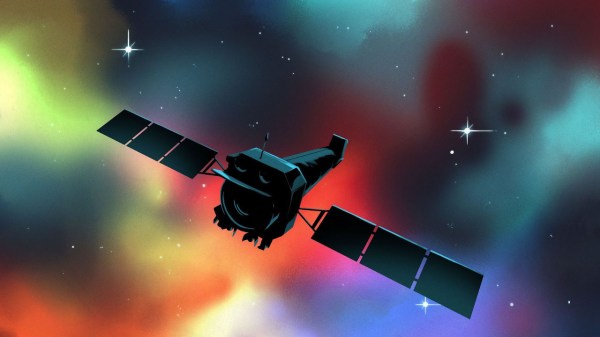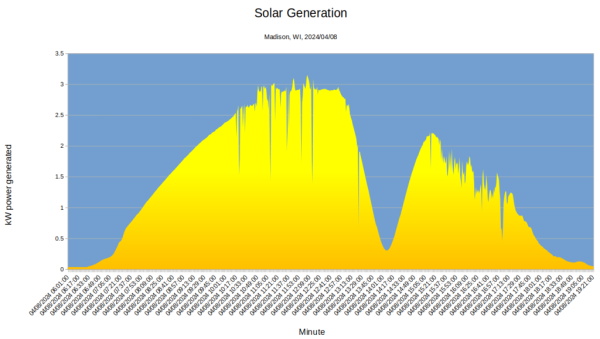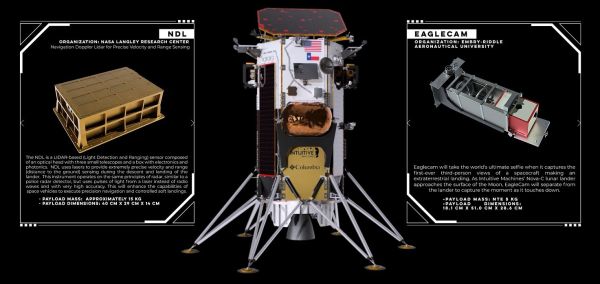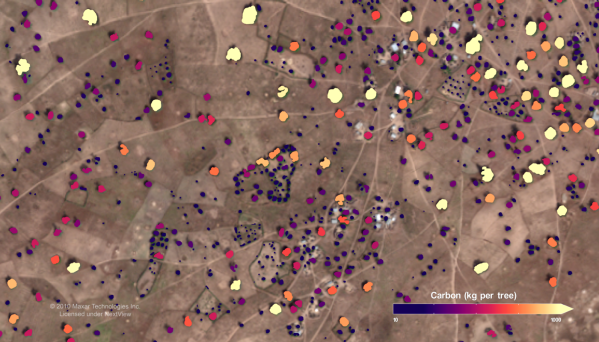Do humanoid robots dream of electric retirement? Who knows, but maybe we can ask Boston Dynamics’ Atlas HD, which was officially retired this week. The humanoid robot, notable for its warehouse Parkour and sweet dance moves, never went into production, at least not as far as we know. Atlas always seemed like it was intended to be an R&D platform, to see what was possible for a humanoid robot, and in that way it had a heck of a career. But it’s probably a good thing that fleets of Atlas robots aren’t wandering around shop floors or serving drinks, especially given the number of hydraulic blowouts the robot suffered. That also seems to be one of the lessons Boston Dynamics learned, since Atlas’ younger, nimbler replacement is said to be all-electric. From the thumbnail, the new kid already seems pretty scarred and battered, so here’s hoping we get to see some all-electric robot fails soon.
nasa313 Articles
Chandra X-ray Observatory Threatened By Budget Cuts
Launched aboard the Space Shuttle Columbia in July of 1999, the Chandra X-ray Observatory is the most capable space telescope of its kind. As of this writing, the spacecraft is in good health and is returning valuable scientific data. It’s currently in an orbit that extends at its highest point to nearly one-third the distance to the Moon, which gives it an ideal vantage point from which to make its observations, and won’t reenter the Earth’s atmosphere for hundreds if not thousands of years.
Yet despite this rosy report card, Chandra’s future is anything but certain. Faced with the impossible task of funding all of its scientific missions with the relative pittance they’re allocated from the federal government, NASA has signaled its intent to wind down the space telescope’s operations over the next several years. According to their latest budget request, the agency wants to slash the program’s $41 million budget nearly in half for 2026. Funding would remain stable at that point for the next two years, but in 2029, the money set aside for Chandra would be dropped to just $5.2 million.
Drastically reducing Chandra’s budget by the end of the decade wouldn’t be so unexpected if its successor was due to come online in a similar time frame. Indeed, it would almost be expected. But despite being considered a high scientific priority, the x-ray observatory intended to replace Chandra isn’t even off the drawing board yet. The 2019 concept study report for what NASA is currently calling the Lynx X-ray Observatory estimates a launch date in the mid-2030s at the absolute earliest, pointing out that several of the key components of the proposed telescope still need several years of development before they’ll reach the necessary Technology Readiness Level (TRL) for such a high profile mission.
With its replacement for this uniquely capable space telescope decades away even by the most optimistic of estimates, the potential early retirement of the Chandra X-ray Observatory has many researchers concerned about the gap it will leave in our ability to study the cosmos.
Continue reading “Chandra X-ray Observatory Threatened By Budget Cuts”
Double-Checking NASA’s Eclipse Estimate At Home
If you were lucky enough to be near the path of totality, and didn’t have your view obscured by clouds, yesterday’s eclipse provided some very memorable views. But you know what’s even better than making memories? Having cold hard data to back it up.
 Hackaday contributor [Bob Baddeley] was in Madison, Wisconsin for the big event, which NASA’s Eclipse Explorer website predicted would see about 87% coverage. Watching the eclipse through the appropriate gear at the local hackerspace was fun, but the real nerding out happened when he got home and could pull the data from his solar system.
Hackaday contributor [Bob Baddeley] was in Madison, Wisconsin for the big event, which NASA’s Eclipse Explorer website predicted would see about 87% coverage. Watching the eclipse through the appropriate gear at the local hackerspace was fun, but the real nerding out happened when he got home and could pull the data from his solar system.
A graph of the system’s generated power shows a very clear dip during the duration of the eclipse, which let him determine exactly when the occlusion started, peaked, and ended.
Continue reading “Double-Checking NASA’s Eclipse Estimate At Home”
Voyager 1 Issue Tracked Down To Defective Memory Chip
After more than forty-six years all of us are likely to feel the wear of time, and Voyager 1 is no different. Following months of harrowing troubleshooting as the far-flung spacecraft stopped returning sensible data, NASA engineers now feel confident that they have tracked down the cause for the problem: a single defective memory chip. Why this particular chip failed is unknown, but possibilities range from wear and tear to an energetic particle hitting it and disrupting its operation.
We’ve covered the Voyager 1 troubleshooting saga so far, with the initial garbled responses attributed to a range of systems, but narrowed down to the Flight Data Subsystem (FDS), which prepares data for transmission by the telemetry modulation unit (TMU). Based on a recent ‘poke’ command that returned a memory dump engineers concluded that the approximately 3% of corrupted data fit with this one memory chip, opening the possibility of a workaround.
Recently NASA engineers have also been working on patching up the firmware in both Voyager spacecraft, against the background of the dwindling energy produced by the radioisotope generators that have kept both spacecraft powered and warm, even in the cold, dark depths of Deep Space far beyond the light of our Sun.
Hackaday Links: February 25, 2024
When all else fails, blame it on the cloud? It seems like that’s the script for just about every outage that makes the news lately, like the Wyze camera outage this week that kept people from seeing feeds from their cameras for several hours. The outage went so far that some users’ cameras weren’t even showing up in the Wyze app, and there were even reports that some people were seeing thumbnails for cameras they don’t own. That’s troubling, of course, and Wyze seems to have taken action on that quickly by disabling a tab on the app that would potentially have let people tap into camera feeds they had no business seeing. Still, it looks like curiosity got the better of some users, with 1,500 tapping through when notified of motion events and seeing other people walking around inside unknown houses. The problem was resolved quickly, with blame laid on an “AWS partner” even though there were no known AWS issues at the time of the outage. We’ve said it before and we’ll say it again: security cameras, especially mission-critical ones, have no business being connected with anything but Ethernet or coax, and exposing them to the cloud is a really, really bad idea.
Intuitive Machines’ Nova-C Makes It To The Lunar Surface In US Return After Half A Century
Intuitive Machines’ first mission (IM-1) featuring the Nova-C Odysseus lunar lander was launched on top of a SpaceX Falcon 9 on February 15th, 2024, as part of NASA’s Commercial Lunar Payload Services (CLPS). Targeting a landing site near the lunar south pole, it was supposed to use its onboard laser range finders to help it navigate safely for a soft touchdown on the lunar surface. Unfortunately, it was this component that was found to have malfunctioned as the spacecraft was already in lunar orbit. Fortunately, there was a workaround. By using one of the NASA payloads on the lander, the Navigation Doppler Lidar (NDL), the mission could continue.
Perhaps unsurprisingly, the use of the NDL as a fallback option was considered before launch, and since its functionality overlaps with that of the primary laser range finders of Nova-C, it was pressed into service with a new configuration uploaded by IM operators back on Earth before Nova-C committed to a landing burn. Then, on February 22nd, the spacecraft began its descent to the surface, which also involved the Eaglecam payload that was designed to be released before snapping a self-portrait of the lander as it descended.
Measuring Trees Via Satellite Actually Takes A Great Deal Of Field Work
Figuring out what the Earth’s climate is going to do at any given point is a difficult task. To know how it will react to given events, you need to know what you’re working with. This requires an accurate model of everything from ocean currents to atmospheric heat absorption and the chemical and literal behavior of everything from cattle to humans to trees.
In the latter regard, scientists need to know how many trees we have to properly model the climate. This is key, as trees play a major role in the carbon cycle by turning carbon dioxide into oxygen plus wood. But how do you count trees at a continental scale? You’ll probably want to get yourself a nice satellite to do the job.
Continue reading “Measuring Trees Via Satellite Actually Takes A Great Deal Of Field Work”
















